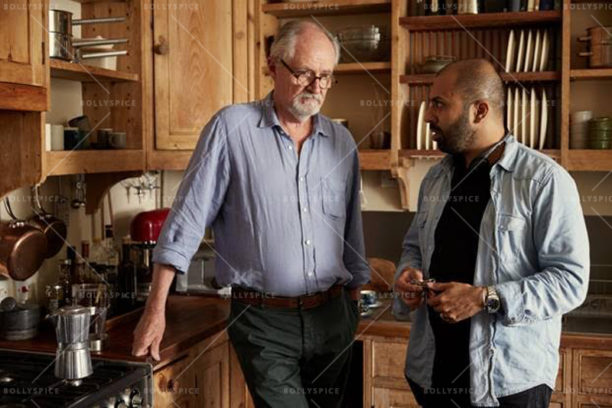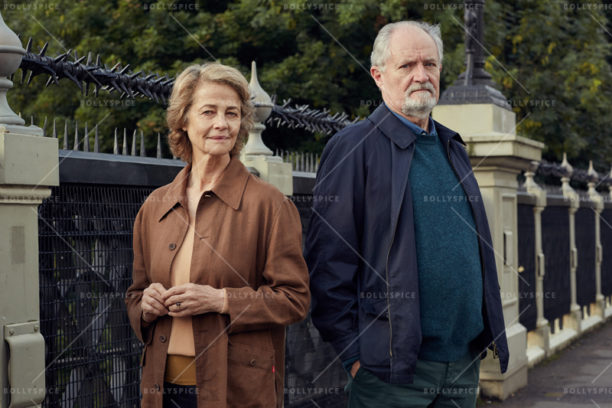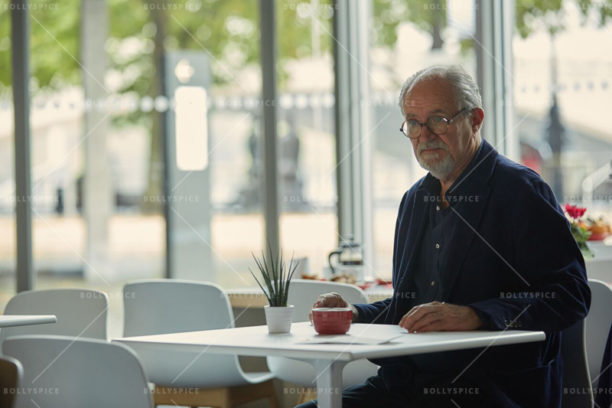Lauded at film festivals and by critics the world over, and loved by audiences, The Lunchbox (2013) directed by Ritesh Batra, was a huge moment for cinema and an outstandingly successful outing for the first time director.
Now, Batra has turned his lens to a new project, an adaption of The Man Booker winning novel by Julian Barnes’ ‘The Sense of An Ending’.
Starring an incredible cast including Jim Broadbent, Harriet Walter, Michelle Dockery, Emily Mortimer, Billy Howle, Joe Alwyn, Freya Mavor, Matthew Goode and Charlotte Rampling, The Sense of An Ending opens in New York and LA on Friday and then expands to more theaters by March 17th and opens in India on March 24th.
Check out the trailer:
When Mr. Batra was in New York, I got the chance to have a fabulous conversation with him about making the movie, working with that incredible cast and so much more.
Did you always want to make films?
Yes, but you know, this is kind of a funny business where everybody finds their way into it differently. This was something definitely I always wanted to do. I had a day job before this. I studied business and economics. Then right out of college I was a consultant for a while. Then I quit and I tried to seriously make movies. This was in my early to mid twenties. I just tried to find my way into it. Yes, that is just how it goes. (Laughs) Everybody has a different story, I guess, of how they got into this crazy business.
The acclaim and reviews for your first film, The Lunchbox, were incredible worldwide, what are your thoughts on that now?
It was a really pleasant surprise for everybody who worked on the movie. We put a lot into it. Then when it all came together and you are making it – we were really excited by it. I remember when we had a cast and crew screening everybody was really so excited and positive about the movie. But that doesn’t mean that it is going to be successful. Later when it went out and it kept running in theaters and it did all it did, it really was a pleasant surprise for everyone. It was really great. It was a great journey. So many positive vibes and the right people got involved and got excited by it. It was Nimrat Kaur’s first movie; she was from theater. Irrfan [Khan], he was so generous to be part of it. We really enjoyed working together. Nawaz [Siddiqui] was terrific in it. It was just incredible… the whole thing was really nice.
Coming to The Sense of An Ending, what was it about the book and this story that drew you to want to make this movie?
You know, the whole being of it. It is a brilliant book. I read it the year it came out and I just grew very attached to it. Years later it came to me as an offer to direct. I really came at it through a love of the book. Nick Payne had already done a lot of good work; he had made a very ingenious adaptation of it. Then we worked together for many months. It was really just a love of Julian’s writing and his prose and these incredible characters that really drew me to it.
What were the most important aspects to you and Mr. Payne that you felt you had to honor from the story in your film?
The book is really difficult to adapt because it is a first person account to the reader and movies have to be told through relationships. So, just building those relationships and to tell the same story Julian told and try to stick to the essence of his work – that was really important to us, I would say, all along.
How would you describe The Sense of An Ending to the audience?
It is a story of Tony Webster, who is a late middle-aged English guy who goes on an incredible journey and reconnects with his first love played by Charlotte Rampling and discovers things about himself that help him mend his relationship with both his ex-wife and his pregnant daughter.
There are many layers, times, relationships and revelations throughout this film; so how did you make sure to keep it all together, to keep it moving forward while slowly giving out the information to develop the story, both in the past and the present, and not let it run away from you?
It really is a process throughout. The great thing about making a movie like this is that it is not a huge movie project-wise, so we were really restricted in shooting the past on the weekend, when those locations were available, and shooting the present on weekdays. So, I got the chance to toggle between the two worlds on the weekends and the week. I was really the link between the actors on both ends and to build this whole world of the past and keep it accurate to the 60s. For this movie, delving into the 60s and the past and the present day was difficult, because it was not a world I was familiar with, so I had to educate myself a lot on the 60s in England and use references and rely a lot on a great crew. So I was in the 60s and then I was in the present day and that was very helpful I thought. We had to shoot all in the confines of London, but you know that limitation was also a nice trend to have because it gave me an opportunity not to look at it as chapters, but to look at it as one being.
How do you go about casting your films?
It is always a different process, but with this movie it was a very interesting puzzle because they were such legendary actors like Jim Broadbent, Charlotte Rampling, and Harriet Walter who have had just the most interesting and varied careers. Then you have very sort of soulful and interesting young actors like Michelle Dockery and Emily Mortimer. Then you have really young actors that have never been in a movie. So you have this entire gamut and range of people that you have the privilege to work with and then putting it all together. The casting also helps to tell the story a lot because the distance between the young Tony and the old Tony, as a character, is really not that much, but the distance between the young Veronica and the old Veronica is huge, because she had been through a lot of tragedy and upheaval and triumphs and everything. So the casting, I think, really helped to tell the story. That was part of the process; we were really trying to tell the story through the casting.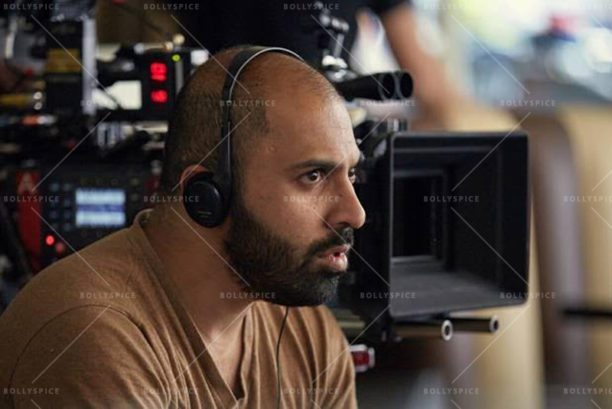
I know you worked with the actors to find the characters, and it is in the script, but what do you do to realize who they are and how you want to portray and what their journey will be?
You have to make sure your main character for sure, but even the other characters, have a clear line of action throughout. But you know, you always try and read between the lines and get deeper really. These are really sophisticated actors and their choices are great and you are trying to get a lot of variety. You know, movies are really crafted on the editing table. At the end of the day when you sit down with all of the material you have, that is when you craft it and you sort of rewrite it. That is really what you are trying to do is you are trying to get and go deeper from take to take, trying to either explore a new avenue or you are trying to go deeper into the same avenue. I don’t know if that answers your question (you can hear the smile) but that really is the thought process.
Then editing this all, what is difficult because there is so much involved, the 60s and the present day, and the characters and moments?
I don’t think I would say it was difficult, but it was time consuming. We took our time doing it because it was important to do that. And even the scenes between Tony and Margaret, they shouldn’t be just devices to launch into a flashback. They should be really layered and meticulous. They should have their own life and vitality to them and that relationship should really be present in those scenes. So, we took our time with it but I don’t think it was difficult as it was time consuming. (Laughs)
Of course, there is the incredible Mr. Jim Broadbent as the lead in the film, tell us about working with him.
Well, he is an incredible person, because his character both in the book and the movie is a pretty unsympathetic character and Jim is so affable and so charming. When you meet him you just immediately really like him as a person. It is hard, no it is impossible, not to like him. He makes this part really work because he is not a standard issue curmudgeon and he is someone who will play this with a simplicity and a depth and feeling. It was incredible to work with him. It is also very easy. It is very simple. Everything is simple, which is why it is interesting, because it is like a pebble in clear water – it is just clear and simple and beautiful. It is not embellished with anything it is just the truth is what it is.
He speaks just with the emotion he can convey in a look in his eyes. Did you ever sit back and just watch.
Yes! And you know all of these actors like Charlotte Rampling and Emily Mortimer who is so soulful, and even the younger actors Billy Howle is an amazing actor. You know, it is a really privileged position to be in to collaborate with them and to be the first audience for them. It is a real privilege.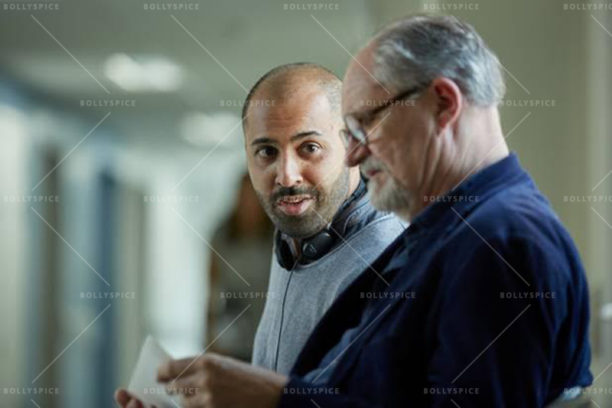
I loved the shots, where you had Mr. Broadbent within the memory of the 60s, such an interesting way to show his thought process, what went into deciding to show it that way?
The difference between the movie and the book is that it really is an internal journey and the question was how do we portray it cinematically. Also, for this movie we were leaving for long flashbacks – 5-10 minutes. It is a long time to leave for and then to come back and have the audience still be engaged in Tony’s present day journey. So those embellishments and those flourishes really help in telling the story I think – to bring the worlds closer together. To make his journey more sort of visual. Those embellishments we came up with, as we got closer to the shoot.
What are you the most proud about with this movie?
That is a difficult question to answer. I hope it can go out there and speak to people personally. It really is a story about personal histories. It is an adaption of a great book – a book that I love. You know, movies and books they have to be like cousins, they can’t be siblings. You know with siblings there is a thing called sibling rivalry and siblings can kill each other (laughs) but books and movies have to compliment each other. I hope the movie compliments the book and that it is distant enough from it and yet it does it some measure of justice.
The author Julian Barnes has he seen it and what were his thoughts on it?
He saw it and he sent me a very generous note saying that he loved it. He loves the departures we have taken and how we have honored the book. He is a very generous man. It was very incredible to have him watch it and to be so generous with his words.
Both of your films, if you will forgive me, end with just a sense of an ending. We don’t know what happened after the last shot in The Lunchbox, and the same can be said for this movie. Is that something you do consciously?
Well, not really. I don’t know. The thing with movies is that you have to find a line to walk on so the audience can really bring themselves to it. For an example, in The Sense of an Ending, when Tony talks about that letter he wrote and he says he forgot he wrote it, but how can you forget writing something like that? Did he forget or is he lying? The story can walk on that line and that is an interesting territory. You don’t want to say that he forgot and you don’t want to say that he is lying. So you really walk on the line between the two and that is what is really interesting to do. That is where you want the audience to come with you. So, it is not about leaving things open ended or anything – it is just about finding an interesting line to offer.
You have probably been asked this a gazillion times, but what are the differences in making a film like The Lunchbox in India, and a bigger film like this in England and then on to your next with Jane Fonda and Robert Redford?
In The Lunchbox we had less of a budget by far, but we had more time! So when you don’t have enough money you better have enough time. (Laughs). So we sort of lead up to it. We prepped the movie for months, 4-6 months. There was a lot of talking with the actors and traveling through the script. As you go on, when you work with busy actors you don’t always get enough time with them, but then you have find other ways to rehearse – on set and sometimes not rehearse and just try to discover the scenes with several takes. Otherwise, it is the same everywhere by just delving into the world of the story that is always new and interesting and challenging, but the process of making movies is the same everywhere.
You also have the film Our Souls at Night with Jane Fonda and Robert Redford. What can you tell us about that film?
It is something that I am working on right now, so it is something that when you finish the work and when you are done with the work, like now with The Sense of An Ending and we are putting it out, it is much easier to talk now then when you are in the middle of it. It is much more difficult. I would love to talk to you again in the fall when I am done with it. When it is coming out I would love to talk with you again. But it is harder to talk about it when you are still working on it.
Do you have any plans to make any other films in India?
Absolutely! I am always trying to write something that is set at home. I definitely would love to go back to India for the next film. I just don’t know what it is going to be, but I definitely have plans to go back and make a movie in India again.
Who would you like to work with there?
I would love to work again with the actors that I worked with in The Lunchbox. (Laughs) We are friends and there is a shorthand there, there is a real comfort. So I would really like to do that again to work with the same actors again. Really find another story that is worthy of them.
What do you love about being a director and being a part of movies?
It is a real privilege. What I really love about it is being able to go deep into a story and deep into a world and then creating it and then turning it over to an audience in the end. After that, it is up to them and it is theirs to take and hopefully bring themselves to it. I really love the whole process of making a movie. The writing and the shooting and the editing – each time you are rewriting the story. It is really interesting and it is changing every day and that is what I love about it. The discovery that it involves.
I would like to thank Mr. Batra for the amazing chat and I am already looking forward to talking with him about his next film.
As a side note, I was able to watch The Sense of An Ending through a screener and honestly it is one of the best films I have seen. It tells an amazingly mesmerizing story, but more on that in my review coming soon. I will just say be sure to see The Sense of An Ending, it is a film not to be missed!
Photo credit:Robert Viglasky

